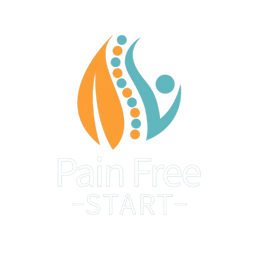Introduction
Hypermobility can often lead to a frustrating combination of joint pain and instability. When the connective tissues supporting the joints are more elastic than usual, people with hypermobility may struggle with joint alignment, stability, and frequent discomfort. Managing these symptoms effectively is crucial for maintaining function and reducing the risk of injury. In this blog, we’ll explore physiotherapy strategies and self-management tips to help improve stability, reduce pain, and enhance quality of life.
Understanding Joint Instability in Hypermobility
Joint instability in hypermobility is primarily due to the laxity of ligaments and other supportive tissues, which increases the risk of subluxations or joint dislocations. Not sure if you are hypermobile then take a look at this blog to help Are you hypermobile? Take this test.
Physiotherapy Techniques for Pain Relief
Managing pain in hypermobile joints involves a combination of strategies. A research review by the CSP recommends a multimodal approach that may include:
- Strengthening Exercises: Building muscle strength around the hypermobile joints is essential for improving stability. Focus on core and proximal muscle strengthening to offer greater support.
- Postural Training: Correcting posture is key for reducing strain on unstable joints. Physiotherapists can provide tailored advice on maintaining good posture throughout daily activities.
- Optimising biomechanics: If your body is not well aligned, it creates extra stress through the already stressed hypermobile joints.
- Manual Therapy: Gentle joint mobilisations and soft tissue techniques can reduce muscle tension around the affected joints. Caution has to be used depending on the extent of the hypermobility.
Home Management Strategies for Joint Instability
- Low-Impact Exercise: Activities like swimming, cycling, and Pilates are great choices as they reduce strain on the joints while building strength.
- Strength: Build strength to support joints and improve alignment.
- Improve Posture and Alignment: Reducing the strain through the joints and avoiding extremes of range.
- Using Braces or Supports: Sometimes, bracing a particularly unstable joint can provide extra support during exercise or daily activities. If you struggle with frequent dislocations then braces and supports can be considered. Your first port of call should be to work on your own strength and stability to support the joints. Discuss this with your Physiotherapist or Specialist if you think you would benefit.
- Pain Management Techniques: The use of heat packs, medication, TENS (Transcutaneous Electrical Nerve Stimulation), or guided relaxation techniques can help manage flare-ups.

LEARN MORE ABOUT HOW I CAN SUPPORT YOU, CLICK HERE.
Case Study – Amy’s Story
Amy had been struggling for about a year with neck and shoulder pain before she came to see me. After taking her through an assessment it was evident that although her shoulders were very mobile her upper back was very stiff. This stiffness in her upper back was creating pain directly but also indirectly because her shoulders were having to move more to compensate. Because of the stiffness Amy struggled to maintain a good posture which was then impacting on her neck and shoulders. Amy also had very poor strength, especially in her deep postural/core muscles.
What we did
Together we worked to develop a program to tackle all the issues above.
Exercises designed to increase mobility through the upper back, Postural Re-education, and Strengthening exercises to activate her rotator cuff muscles and her posterior chain.
Immediately – Amy found she had some immediate relief but the big changes came with time.
6 weeks – Amy was noticing a big difference in her strength, and posture. Her pain was much reduced.
4 months – Amy was delighted she felt so much more confident with her body, she felt strong and supported.
Amy’s change was lovely to see I wish I could have videoed our first and last meeting the difference in this lady was that her posture was better she held herself better but it also gave her hope and faith in her body she felt back in control.
What can you do?
If this resonates with you then I would love to work with you. I have lots of ways in which I can help depending on your specific problem areas. Head to the website and watch the welcome video to learn more.
Start by signing up for my FREE POSTURE PROGRAM working together to make immediate improvements. I would love to see you there.
Conclusion
While joint pain and instability in hypermobility are challenging, physiotherapy can offer a structured approach to improving joint health. Working with a physiotherapist to develop an individualised plan that combines strength training, postural correction, and pain management can make a significant difference.
Take care, Helen
Helen Manders BSc (Hons) MCSP HCPC
Chartered Physiotherapist Since 2001



